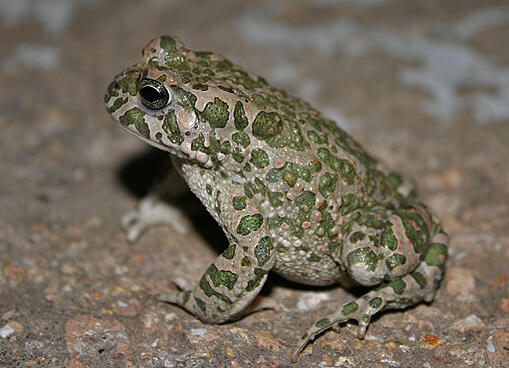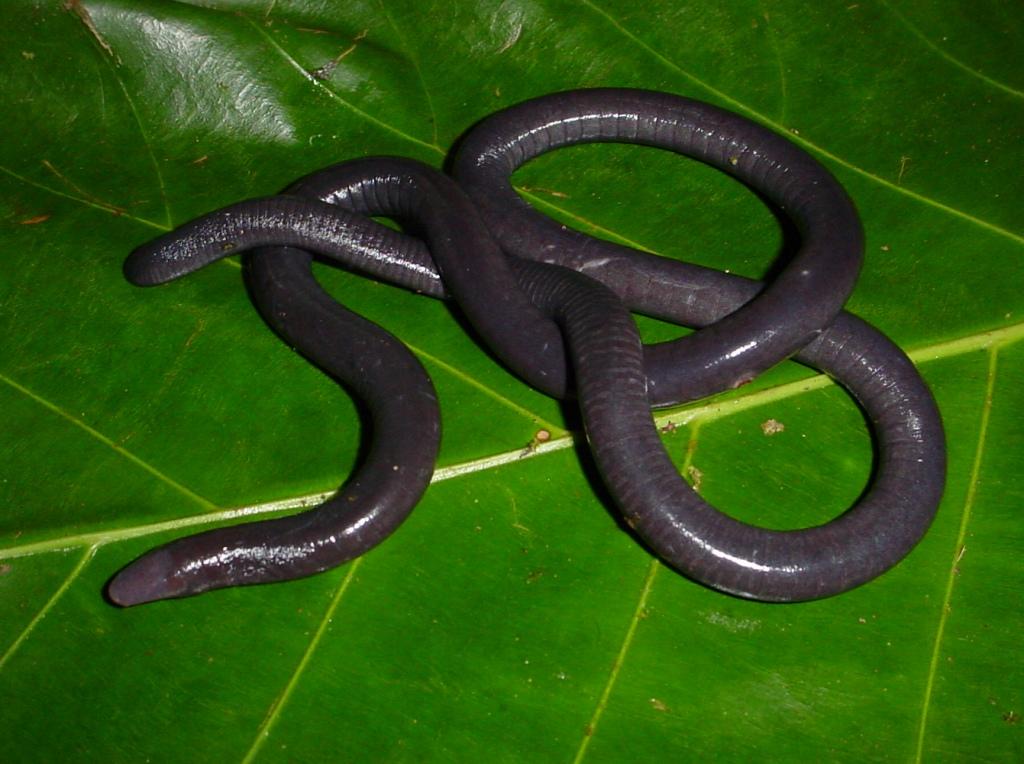- includes
frogs, toads, newts, salamanders
- appeared
about 350 million years ago: the
environment at that time included periods of floods and droughts, there were
lots of insects on land (in the air), there was more oxygen in the air than
there had ever been before and there were LOTS of carnivorous fish in the seas!
- problems of
moving out of water included the harsher climate that would cause the animal to
dry out, the greater temperature changes that occur in air compared to water
and the fact that on land there is no buoyancy, so the animals require a more
supportive skeleton
Body Structure
1. head, trunk and 4 legs (or sometimes
none). Toes have no claws and are often
webbed
2. respiration: primitive internal
lungs, but no muscles to coordinate breathing, so the animals “swallow”
air. They also breathe through their
skin. The skin is thin, lacks scales and
contains glands that secrete mucus to keep it moist (gas exchange can only
occur if it is moist). Some also have
glands that excrete toxins (for protection)
 |
3. circulation: three-chambered heart. There is some mixing of oxygenated and
deoxygenated blood in the ventricle.
Amphibians have double-circuit
circulation, so there is a loop through the lungs and to the skin
(pulmocutaneous circuit) and a loop through the body (systemic circuit)
 |
| Amphibian circulation |
4. nutrition: predators, but most specialize as predators
of insects, so we call them insectivores
5. reproduction: most species require
water to reproduce. The eggs lack shells
or thick protective membranes, so they must be kept in water to stay
moist. Fertilization is external and
occurs after courting (mating behaviours), which include things like the deep
croaking in bullfrogs or in some species the male’s “thumb” enlarges in the
reproductive period and he presses it into a point on the female’s back, which
stimulates her to lay eggs. In general,
amphibians do not care for their young.
6. metamorphosis is typical in
amphibians:
o eggs
hatch
o
get
a tadpole (ebihal), which has fins, a lateral line system, gills and a
2-chambered heart
o
the
tadpole feeds and grows and then goes through a period of transition where the
fins, lateral line system and gills disappear and the 2-chambered heart
develops into a 3-chambered heart
 |
| Amphibian life cycle |
7. homeostasis: amphibians are ectotherms (poikilotherms), so their body temperature varies with the environmental temperatures, therefore, the majority of amphibians live in warm climates. Two dormant phases can be observed in amphibians, which they usually spend buried in mud: estivation if it is too hot, hibernation if it is too cold.
CLASSIFICATION – there are only 16 species in
Hungary, ALL are protected
1. O. Urodela (farkos) – salamanders and newts
 |
- some are totally aquatic (particularly
newts), others live in damp places
- bend side to side when they move, because
their leg joints are attached at the sides of the body and not under it
-internal fertilization is common in this
group, there is no real tadpole stage.
In some larval characteristics, like gills remain (called neoteny)
- in Hungary the fire salamander (foltos
szalamandra) is found in beech (bükk) forests.
 |
- legs are designed for jumping, eyes are found
on top of head and covered with a retractable membrane (“pre-eyelid”), they
have tympanic membranes behind the eyes with internal ears for sound and
balance. They have vocal chords and
males have large throat pouches to amplify the sound during mating.
- another unique feature of frogs are their
long sticky tongues, fastened at the front of their mouths, designed for
catching insects.
- warning colouration is common: highly
colourful = highly poisonous
in Hungary, species include the edible frog
(kecskebéka), the marsh frog (mocsári béka), the moor frog (gyepi béka) and the
tree frog (leveli béka)
| Edible frog |
 |
| Marsh frog |
 |
| Tree frog |
- - toads
are generally less agile, live in drier conditions and are more active at
night. Their legs are shorter, their
eggs are found in stringy masses and their tadpoles are typically black
in Hungary, species include the yellow-bellied
toad (in the hills), the red-bellied toad (in the lowlands), the common toad
(barna varangy) and the green toad.
 |
| Yellow-bellied toad |
 |
| Red-bellied toad |
 |
| Common toad |
 |
| Green toad |
3. O. Apoda (no legs)
- they have long thin bodies and resemble
worms, they burrow in the ground, have poor or no vision and are rarely seen by
people.
 |
| Apoda |
No comments:
Post a Comment